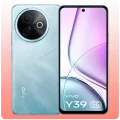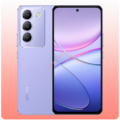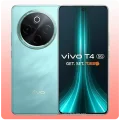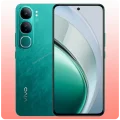- Home
- All Products
- Mobiles
- vivo Y19
vivo Y19
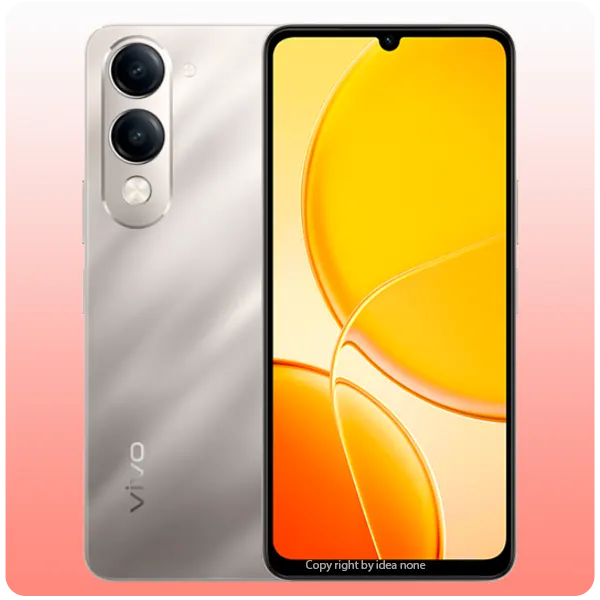

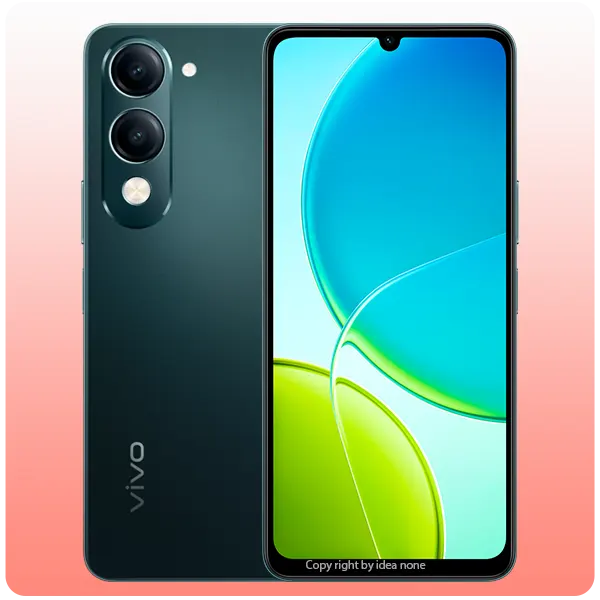

-
CPU: Mediatek Dimensity 6300 (6 nm)
-
RAM: 4GB, 6GB
-
Storage: 64GB, 128GB
-
Display: IPS LCD, 90Hz
-
Main Camera: 13 MP + 0.08 MP
-
Selfie Camera: 5 MP
-
Battery: Li-Ion 5500 mAh
-
OS: Android 15, Funtouch 15
Overview
General
| Device Type | Smart Phone |
| Announced | 01-05-2025 |
| Released | 01-05-2025 |
| Status | Available |
| International Price | $170 |
| Indian Price | ₹15,990 |
| BD Unofficial Price | ৳19,990 |
Design
| Type Design Type called form factor refers to a mobile phone's size, shape, and style as well as the layout and position of major components of phone. There are three major form factors seen in mobile phones => bar phones, folding phones and sliding phones. | Bar |
| Dimensions | 167.3 x 77 x 8.2 mm (6.59 x 3.03 x 0.32 in) |
| Weight | 199 g (7.02 oz) |
| Body Thickness | 8.2mm |
| Protection | Glass front, plastic frame, plastic back |
| Colors | Titanium Silver, Majestic Green |
| Water Resistant | Glass front, plastic frame, plastic back |
Network
| Technology | GSM / HSPA / LTE / 5G |
| SIM | Nano-SIM + Nano-SIM |
| Speed | HSPA, LTE |
Display
| Display Type Display Technology => A number of display technologies and types used in mobile phones => TFT (Thin Film Transistor), IPS (In-Place Switching), OLED (Organic Light Emitting Diode), AMOLED (Active-Matrix Organic Light-Emitting Diode), Super AMOLED (an even advanced version of AMOLED), Resistive Touchscreen (Resistive touchscreens contain two layer of conductive material with a very small gap between them which acts as a resistance), Capacitive Touchsceen (Capacitive touchscreen technology consists of a layer of glass coated with a transparent conductor) | IPS LCD, 90Hz |
| Size | 6.74 inches, 109.7 cm2 (~85.1% screen-to-body ratio) |
| Resolution | 720 x 1600 pixels, 20:9 ratio |
| Pixel Density Pixel Density (PPI) is refers to the concentration of pixels on a particular display, measured in pixels per inch (ppi). Pixel density is calculated by dividing the diagonal pixel resolution of a display by its diagonal size, higher pixel density better display quality. | (~260 ppi density) |
| Refresh Rate | 90Hz |
| Display Brightness | 570 nits (HBM) |
Main Camera
| Camera 1 Camera is able to capture photographs and usually videos, The most important characteristics of a camera are the resolution (measured in megapixels), lens focus type (fixed or automatic), higher megapixel cameras are known to capture higher quality photos, but not always a good measurement of the photos quality. | 13 MP, f/2.2, (wide), PDAF |
| Camera 2 | 0.08 MP, f/3.0 (auxiliary lens) |
| Video | 1080p@30fps |
| Camera Features | LED flash, panorama |
Selfie Camera
| Camera 1 Camera is able to capture photographs and usually videos, The most important characteristics of a camera are the resolution (measured in megapixels), lens focus type (fixed or automatic), higher megapixel cameras are known to capture higher quality photos, but not always a good measurement of the photos quality. | 5 MP, f/2.2, (wide) |
| Video | Yes |
Software
| Operating System OS => Every computer system run on a base software called Operating System (OS). Operating System controls all basic operations of the computer (such as smartphone, PDAs, tablet computers and other handheld devices). The Operating System allows the user to install and run third party applications (apps), apps are used to add new functionality to the device. | Android 15 |
| User Interface UI or user interface of a device is the look and feel of the on-screen menu system. How it works, its color scheme, how it responds to button presses, all of these things are part of the user interface. | Funtouch 15 |
Hardware
| Chipset Chipset is a group of integrated circuits designed to perform one or a more dedicated functions, often with real time computing constraints, Popular smartphones are equipped with more advanced embedded chipsets that can do many different tasks depending on their programming. | Mediatek Dimensity 6300 (6 nm) |
| CPU CPU (Central Processing Unit) mostly known as processors, CPU processes instructions in order to carry out certain functions that make your device operate properly. Processors are often described as the brain of computers, smartphones and tablets, Smartphones and tablets rely on processors to carry out their every task, Processors are an incredibly important factor in selecting any type of computing device, including your smartphone. |
Octa-core (2x2.4 GHz Cortex-A76 & 6x2.0 GHz Cortex-A55) |
| GPU GPU (Graphics Processing Unit) is a single-chip processor designed to rapidly manipulate and alter memory to accelerate the creation of images in a frame buffer intended for output to a display, This includes things such as lighting effects, object transformations, and 3D motion. | Mali-G57 MC2 |
| RAM (Memory) RAM (Random Access Memory) is a type of computer memory that can be accessed randomly, any byte of memory can be accessed without touching the preceding bytes that allows information to be stored and accessed quickly from random locations. RAM is the most common type of memory found in computer systems, smartphones, tablets and other electronic devices. | 4GB, 6GB |
| Internal Storage Internal Storage is a data storage space (flash memory) mostly used in smartphones, tablets and other electronic devices where operating system, apps, music, photos, videos, files and other user data Is stored. | 64GB, 128GB |
| Storage Technology | eMMC 5.1 |
| Card Slot Memory Card Slot is a special slot for inserting a memory card. Memory cards allow you to expand the phone's built-in memory, A memory card (sometimes called a flash memory card or a storage card) is a small storage medium used to store data such as text, pictures, audio, and video, for use on small, portable or remote computing devices such as mobile phones, mp3 players, digital cameras. | microSDXC (dedicated slot) |
| Sensors Sensors are electronic components that detects and responds to some type of input from the physical environment. The specific input could be light, heat, motion, moisture, pressure and location, The output is generally a signal that is converted to use in computing systems, a location sensor, such as a GPS receiver is able to detect current location of your electronic device. |
Fingerprint (side-mounted), accelerometer, proximity, compass |
Connectivity
| Bluetooth Bluetooth is a wireless communications technology for exchanging data between mobile phones, headsets, computers and other network devices over short distances without wires, Bluetooth technology was primarily designed to support simple wireless networking of personal consumer devices. | 5.4, A2DP, LE |
| Wi-fi Wi-Fi is a popular wireless networking technology using radio waves to provide high-speed network connections that allows devices to communicate without cords or cables, Wi-Fi is increasingly becoming the preferred mode of internet connectivity all over the world. | Wi-Fi 802.11 a/b/g/n/ac, dual-band |
| USB | USB Type-C 2.0, OTG |
| Placement GPS The Global Positioning System is a satellite-based radio navigation system, GPS permits users to determine their position, velocity and the time 24 hours a day, in all weather, anywhere in the world, In order to locate your position, your device or GPS receiver must have a clear view of the sky. | GPS, GALILEO, GLONASS, BDS, QZSS |
| NFC NFC (Near field communication) is a set of standards for smartphones and similar devices to establish peer-to-peer radio communications with each other by touching them together or bringing them into proximity, usually no more than a few inches. | No |
| Wireless Charging Wireless Charging (Inductive Charging) uses an electromagnetic field to transfer energy between two objects. This is usually done with a charging station. Energy is sent through an inductive coupling to an electrical device, which can then use that energy to charge batteries or run the device. |
Sound
| Loudspeaker | Yes |
| Headphone Jack |
Battery
| Battery Type Battery Type => Cell phones run on various kinds of batteries depending on the manufacturer, phone size or shape and features. There are basically four types of cell phone batteries => Lithium Polymer, Lithium Ion, Nickel Metal Hydride and Nickel Cadmium. | Li-Ion (Lithium Ion) |
| Capacity Battery Capacity is a measure (typically in Amp-hr) of the charge stored by the battery, and is determined by the mass of active material contained in the battery. The battery capacity represents the maximum amount of energy that can be extracted from the battery under certain conditions. | 5500 mAh |
| Charging | 15W wired |
Performance Tests
| AnTuTu | 183,200 |
| GeekBench |
Single-Core: 351 Multi-Core: 1,285 |
Overall Review
The Vivo Y19 5G is a newly introduced budget-friendly smartphone that brings 5G connectivity to the Y-series lineup. Launched in May 2025, it offers a blend of modern features and reliable performance, making it an attractive option for users seeking affordable 5G capabilities.
📱 Vivo Y19 5G Full Specifications
- Display: 6.74-inch HD+ (720 x 1600 pixels) IPS LCD with a 90Hz refresh rate, providing smooth visuals for everyday use.
- Processor: Powered by the MediaTek Dimensity 6300 chipset, built on a 4nm process, ensuring efficient performance and 5G connectivity.
- RAM & Storage: Available in configurations of 4GB or 6GB RAM paired with 64GB or 128GB internal storage. Note that the storage is not expandable via microSD card.
- Operating System: Runs on Android 15 with Vivo’s custom Funtouch OS, offering a user-friendly interface and the latest Android features.
- Camera System:
- Rear Cameras: Dual setup featuring a 13MP primary sensor and a 0.08MP secondary sensor.
- Front Camera: 8MP selfie camera for clear self-portraits and video calls.
- Battery: Equipped with a 5,500mAh battery supporting 15W fast charging, ensuring extended usage and quick recharging times.
- Connectivity: Supports dual SIM 5G, Wi-Fi, Bluetooth 5.4, GPS, and USB Type-C.
- Design & Build: Features a sleek design with a side-mounted fingerprint sensor for quick and secure unlocking.
✅ Pros
- 5G Connectivity: Access to faster internet speeds and improved network reliability.
- Efficient Performance: The Dimensity 6300 chipset ensures smooth multitasking and app performance.
- Long Battery Life: The 5,500mAh battery provides extended usage, reducing the need for frequent charging.
- Modern Display: The 90Hz refresh rate offers smoother scrolling and better visual experience compared to standard 60Hz displays.
⚠️ Cons
- Display Resolution: The HD+ resolution may not be as sharp as Full HD+ displays, affecting media consumption quality.
- Camera Performance: The dual-camera setup is basic, which may not meet the expectations of photography enthusiasts.
- No Expandable Storage: Lack of microSD card support limits storage expansion options.
🎯 Verdict
The Vivo Y19 5G is a commendable entry-level 5G smartphone that offers essential features for everyday use. While it may not cater to users seeking high-end specifications, it provides a balanced experience for those looking to embrace 5G connectivity without a hefty price tag.
Disclaimer Note
Disclaimer: Prices listed are for reference only and may vary. We strive to keep information up to date but cannot guarantee accuracy. Please verify with the retailer before making a purchase.


